Barking is a noise most commonly produced by dogs. Woof is the most common representation in the English language for this sound (especially for large dogs), other than "bark" itself. Other transliterations include the onomatopeic ruff, arf, yip (for small dogs), and bow-wow.
Why dogs bark
Although dogs are a subspecies of the wolf, Canis lupus, their barking constitutes a significant difference from their parent species. Although wolves do bark (or more accurately, howl or bay), they do so only in specific situations. According to Coppinger and Feinstein, dogs bark in long, rhythmic stanzas but adult wolf barks tend to be brief and isolated. Compared to wolves, dogs bark frequently and in many different situations.
It has been suggested that the reason for the difference lies in the dog's domestication by humans. Dogs present a striking example of neoteny, the retention of juvenile characteristics in the adults. They are similar to young wolves in many of their mannerisms and physical features, such as large heads, flat faces, large eyes, submissiveness and vocalizing – all of which are exhibited in wolf puppies.
Some believe that these characteristics were deliberately selected soon after domestication. There may have been a number of reasons for this. For instance, an overgrown puppy would very likely have been seen as a more engaging companion than a more mature but less amusing pet, as well as being less aggressive. More prosaically, an increased tendency to bark could have been useful to humans to provide an early warning system. Dogs may have been used to alert their owners that another unfamiliar band of humans or a predatory animal was in the area.
Individual dogs bark for a variety of reasons. They may bark to attract attention, to communicate a message, or to express excitement. Dog barks do not constitute an information-rich message in the same fashion as human speech, but they do nonetheless constitute more than mere noise. Statistical analysis has revealed that barks can be divided into different subtypes based on context and that individual dogs can be identified by their barks. Disturbance barks tend to be harsh, low frequency, and unmodulated, whereas isolation and play barks tend to be tonal, higher frequency, and modulated. Barks are often accompanied by body movements as part of a broader package of dog communication.
Types of barking
Warning bark
A warning will usually start out as a low, quiet, but ferociously noticeable growl before escalating into something of a howling bark. This type of reaction is most typically seen in domesticated animals in response to a perceived territorial intrusion. The dog may also bare its teeth if it feels immediately threatened.
Alarm barking
- Labradors often give a warning bark in response to an unusual event that they feel needs your attention, such as "Hey, a car pulled into the driveway!"
This kind of barking is known as 'alarm barking', and is common within a variety of breeds. It is a dog's attempt to be alert, attentive, and informative to his human "pack", as regarding unusual events. It does not signify aggression, and (although often associated with unusual noises intruding on the dog's 'territory') is not the same as territoriality type barking. It may take the form of just one or a few barks, or it may give rise to sustained barking until the dog sees that some action has been taken.
Alarm barking is more likely to arise when a dog can hear, but not see the source of, some noise. Examples of sounds which commonly cause alarm barking include doorbells, cars, noises from adjacent dwellings, and the like. It is a behavior that tends to develop with age and maturity, and also can be related to whether there are others around who might need to be informed of such events - often an alarm barker will remain quiet if alone and there is nobody to 'tell'.
Barking at the dog owner's request
A dog barks when its owner gives a command, such as "Speak", or "Bark".
Barking as nuisance
Bark control
Canine barking can be a nuisance to neighbors, and is a common problem dog owners or their neighbors may face. It is important to realize that a dog which barks is attempting to communicate something, be it anxiety, discomfort, friendliness, assertiveness, loneliness, warning, alarm, deterrent, or other meanings. Different kinds of barking often require different kinds of approach to reduction.
Common approaches are as follows:
- Attempt to understand the cause. Know what triggers the barking. Treat any causes which can be treated.
- Use positive training methods to correct the behavior. Dogs are more likely to bark from anxiety or stress, than otherwise, so punishment can often cause problems by reinforcing a cycle of bad behavior. Instead consider:
- Repeated exposure - to strangers or telephone rings (the "stimulus"), whilst you calm the dog and persuade it to remain quiet
- Distraction - as the stimulus happens, offer treats, give praise, do something to take the dog's mind off it or an alternate preferred behavior.
- Correct other dominant behavior - dogs often bark if they believe they are responsible for the pack. Make clear that you are responsible for the matter, and that he/she should hold back.
- Reshaping - use clicker training (a form of operant conditioning) or other means to obtain barking behavior on command, and then shape that control to give you control over silence too.
- Seek professional advice. For example this advice on barking from the UK Department for the Environment (DEFRA), or a dog trainer, or vet.
- Use a mechanical device such as a bark collar. There are several types, all of which use a collar device that produces a response to barking that the dog notices:
- Citrus spray ("citronella") - dogs as a rule do not like citrus. At the least, it is very noticeable and disrupts the pattern through surprise. These collars spray citrus around the dog's muzzle when he/she barks. (Sometimes these devices make a "hissing" noise before spraying, as an additional deterrent - see "escalation devices")
- Sonic/ultrasonic (including vibration) - these collars produce a tone which humans may or may not be able to hear, in response to barking. Over time, the sound becomes annoying or distracting enough to deter barking.
- Electrical - these collars produce a mild stinging or tingling sensation in response to a bark. It is important that such devices have a failsafe mechanism and shut off after a certain time, to prevent ongoing operation.
- Combination and escalation devices - many sound and/or electrical collars have combination or escalation systems. A combination system is one that (for example) uses both sound and spray together. An escalation device is one that uses quiet sounds, or low levels of output, rising gradually until barking ceases. Escalation devices are effective since they "reward" the dog for stopping sooner by not having "all-or-nothing" action, so the dog can learn to react by stopping before much happens.
Note:
- Different bark collars have been both praised, and criticised, and some are considered inhumane by various people and groups. Electrical devices especially come under criticism by people who consider them torturous and akin to electrocution. However most SPCAs agree that in a last resort even an electric collar is better than euthanasia if it comes to an ultimatum, for a stubborn dog that will not stop any other way. It is generally agreed that understanding the communication and retraining by reward is the most effective and most humane way.
- The use of self-contained ultrasonic bark deterrent devices is one of the few means a person may have to deter barking by another person's dog which they do not have control over. (In such circumstances though it is always best to speak directly with the dog's owner first)
Debarking
The controversial surgical procedure known as 'debarking' is a veterinary procedure for modifying the voice box so that a barking dog will make a significantly reduced noise. It is considered a last resort by some owners, on the basis that it is better than euthanasia, seizure, or legal problems if the matter has proven incapable of being reliably corrected any other way.
Debarking is illegal in the UK and opposed by many animal welfare bodies.

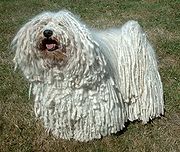









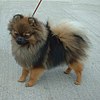

















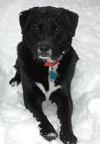



















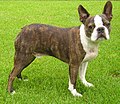




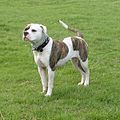











![Validate my Atom 1.0 feed [Valid Atom 1.0]](valid-atom.png)









